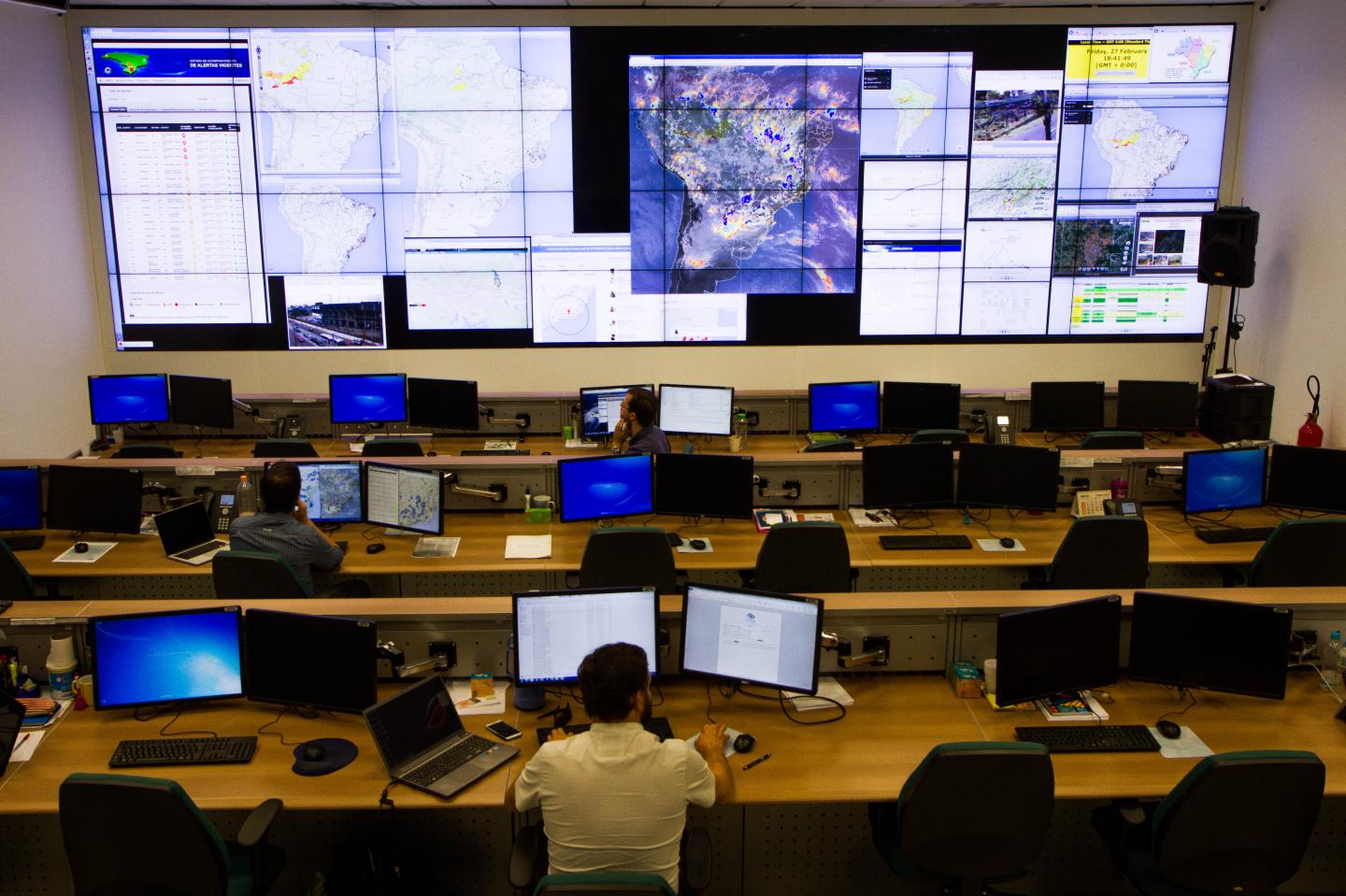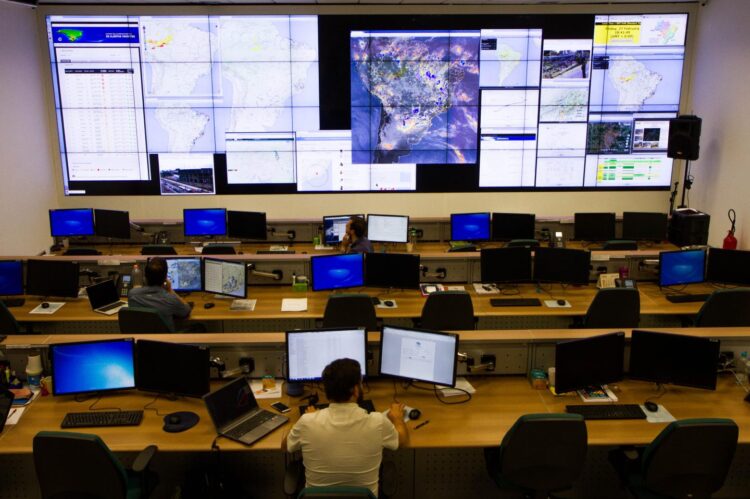Study by researchers at Brazil’s National Disaster Surveillance and Early Warning Center (CEMADEN) also shows a rise in the number of consecutive dry days, suggesting that extreme rainfall events are concentrated in shorter, more widely spaced periods

Credit: Cemaden
Extreme rainfall has become increasingly common in metropolitan São Paulo, Brazil. The capital of the state of São Paulo is the largest city in the southern hemisphere. The metropolitan area suffered from flooding due to heavy rain in February. Early in the month, no less than 114 millimeters (mm) fell in a single 24-hour period. This was the second highest 24-hour amount for the month since 1943, according to Brazil’s National Meteorological Institute (INMET).
According to a study by researchers at the Natural Disaster Surveillance and Early Warning Center (CEMADEN), an agency of the Brazilian Ministry of Science, Technology, Innovation and Communications (MCTIC), both the total rainfall and the frequency of extreme rainfall events in metropolitan São Paulo have increased significantly in the last seven decades.
While there were practically no days with heavy rain (more than 50 mm) in the 1950s, such days have occurred between twice and five times per year in the last ten years in metropolitan São Paulo, according to the authors.
The study was supported by São Paulo Research Foundation – FAPESP under the aegis of its Research Program on Global Climate Change (RPGCC). The findings are reported in the Annals of the New York Academy of Sciences.
Researchers affiliated with INMET, the National Space Research Institute (INPE) and the University of São Paulo’s Institute of Astronomy, Geophysics and Atmospheric Sciences (IAG-USP) also took part in the study.
“Intense rainstorms lasting a few hours with huge amounts of water, as much as 80 mm or 100 mm, are no longer sporadic events. They’re happening more and more frequently,” José Antonio Marengo, a senior researcher at CEMADEN and principal investigator for the study, told.
The researchers analyzed data collected by INMET’s weather stations at IAG-USP and Santana Lookout in the northern part of the city. The analysis showed an increase in the number of days with heavy rain and in the frequency of rainfall extremes, especially during the rainy season (spring-summer).
The dry season used to occur between April and September in most of the state but has lasted until October in recent decades. The number of consecutive days without any rain at all has also gradually increased, suggesting that heavy rainfall events are concentrated in fewer days, interrupted by longer periods of hot dry weather.
With fewer cold nights and more hot days, convective rainfall is more likely to occur, increasing the frequency and intensity of extreme rainfall, the authors note.
In convective rainfall, the ground heats up, boosting evaporation and causing warm moist air to rise (convection). As the air ascends, it cools and forms convective clouds, which precipitate upon reaching saturation.
“We observed a long-term trend in this kind of weather event, with very strong signs that climate change is in progress,” Marengo said.
Records from the IAG-USP and Santana Lookout weather stations showed a four-fold increase in the number of days with rainfall exceeding 100 mm between 2000 and 2018 compared with those from the 1940s or 1960s.
Records from IAG-USP also showed an increase in total rainfall, in the frequency and intensity of heavy precipitation, and in the frequency of consecutive dry days in the period 1931-2017.
“This suggests that the increase in total rainfall in São Paulo in recent decades was due to an increase in ‘heavy’ precipitation, concentrated in fewer days and with longer dry spells in between,” Marengo said.
Causes
According to the researchers, the changing rainfall regime in metropolitan São Paulo may be due to natural climate variability but may also be related to global warming and growing urbanization that has occurred especially in the last 40 years, which has exacerbated the occurrence of urban heat islands.
The growth of urbanization has transformed the region’s previously exposed soil and Atlantic Rainforest remnants into sealed concrete, cement and asphalt surfaces that absorb heat while retaining no moisture. The temperature rises during the day, and as the sun goes down, the accumulated heat rises into the atmosphere, the relative humidity falls, and water evaporates rapidly from the ground to form towering cumulonimbus clouds, Marengo explained.
In his view, heat islands and similar effects help explain the increase in extreme rainfall events that occurred in metropolitan São Paulo between 1933 and 2010.
In the last 20 years, these changes in the rainfall regime, in conjunction with the high-risk construction of buildings on hillsides and riverbanks, have led to an increase in hydrometeorological hazards, triggering disasters such as flash floods, river flooding and landslides, the authors note.
“An extreme rainfall event isn’t itself a natural disaster. So-called natural disasters actually result from a combination of factors ranging from climate and weather to urban, economic and social phenomena. In other words, they’re also anthropogenic disasters that result from human action, not just climate,” Marengo said.
Most Brazilian states suffer from flooding, but it is worst in São Paulo, which accounts for 33.36% of cases, followed by Santa Catarina (11.25%), Rio Grande do Sul (9.06%), Paraná (8.33%), Rio de Janeiro (7.28%) and Minas Gerais (5.96%).
Some 170 river floods and flash floods occurred in the period 2014-18. Flash floods produced the most deaths and serious injuries, followed by landslides and mudslides.
“The Southeast and South regions of Brazil are the worst affected by hydrometeorological disasters because of their population density,” Marengo said.
“Landslides, for example, only kill people because they’re forced to live in high-risk areas where no one should build a home. The streets only fill up with water because the rivers have been channelized and buried, and the city’s surfaces are sealed with asphalt and concrete.”
###
About São Paulo Research Foundation (FAPESP)
The São Paulo Research Foundation (FAPESP) is a public institution with the mission of supporting scientific research in all fields of knowledge by awarding scholarships, fellowships and grants to investigators linked with higher education and research institutions in the State of São Paulo, Brazil. FAPESP is aware that the very best research can only be done by working with the best researchers internationally. Therefore, it has established partnerships with funding agencies, higher education, private companies, and research organizations in other countries known for the quality of their research and has been encouraging scientists funded by its grants to further develop their international collaboration. You can learn more about FAPESP at http://www.
Media Contact
Heloisa Reinert
[email protected]
Original Source
http://agencia.
Related Journal Article
http://dx.





